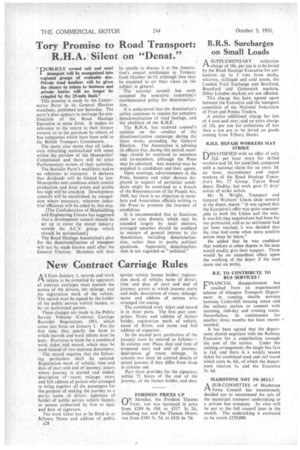New Contract Carriage Rules
Page 30

If you've noticed an error in this article please click here to report it so we can fix it.
AS from January 1, records and work tickets to be compiled by operators. of contract carriages must contain the names of the drivers, the mileage, and the registration mark of the vehicle. The record must be signed by the holder of the public service vehicle licence, or by an authorized person.
These changes are made in the Public Service Vehicles (Contract Carriage Records) Regulations, 1951, which come into force on January 1. For the first time, they specify the form in which records and work tickets must be kept. Provision is made for a combined work ticket and record, which may be used instead of two separate documents, The record requires that the following particulars shall be entered: Registration mark of vehicle; time and date of start and end of journey; points where journey is started and ended; description of route; mileage; name and full address of person who arranged to bring together all the passengers for the purpose of making the journey as a party: name of driver; signature of holder of public service vehicle licence, or person authorized by him to sign; and date of signature.
The work ticket has to be filled in as follows: Name and address of public A28 service vehicle licence holder; registration mark of vehicle; name of driver; time and date of start and end of journey; points at which journey starts and ends; description of roule; mileage; name and address of person who arranged the outing.
The combined work ticket and record is in three parts. The first part comprises; Name and address of licence holder, registration mark of vehicle, name of driver, and name and full address of organizer.
In the second part, particulars of the journey must be entered as follows:— In column one: Place, date and time of proposed start and end of journey; description of route; mileage. In column two must be entered details of actual journey if they differ from those in column one.
Part three provides for the signature, within 72 hours of the end of the journey, of the licence holder, and date.
































































































